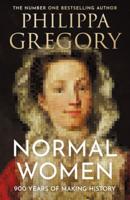Publisher's Synopsis
This historic book may have numerous typos and missing text. Purchasers can usually download a free scanned copy of the original book (without typos) from the publisher. Not indexed. Not illustrated. 1873 edition. Excerpt: ... PUBLIC GALLERIES AND MUSEUMS OF FLORENCE. THE UFFIZI. E begin our review of the public galleries with the Uffizi, as it contains the works of artists from the fifteenth to the seventeenth century, arranged chronologically, and thus illustrating-the History of Art from the revival to the decline. The limits of this volume oblige us to confine our description almost entirely to Tuscan, and especially Florentine Art; and, with rare exceptions, we mention the names or works of celebrated painters or sculptors of other schools. We hope thus to afford some assistance to the foreigner who may not have time to acquire a profound knowledge of the subject, and who, at first sight, may find it difficult to discover any merit, still less beauty, in the early native style of painting. The Corridor extending along three sides of the Uffizi Gallery is lined with sarcophagi, statues, and busts, as well as pictures, all deserving attention, though, with few excep First Corridor. v tions, inferior to the works of art contained in the adjoining rooms. Beneath the vaulted ceiling, which is painted in arabesques, are portraits of emperors, kings, and distinguished persons of all nations; they are only, however, inferior copies of mediocre pictures, and were placed here by the Grand-Duke Cosimo I. The earliest example of art in the gallery--No. i--is a picture of the Madonna and Child, by Andrea Rico of Candia, who lived in the latter half of the eleventh century. His works belong to what is called Byzantine art. The treatment of the subject is conventional; the figures disposed according to established usage, or in the manner commonly practised by the artists in Byzantium (Constantinople). The Child, seated on one hand of the Virgin, clings with a natural...






